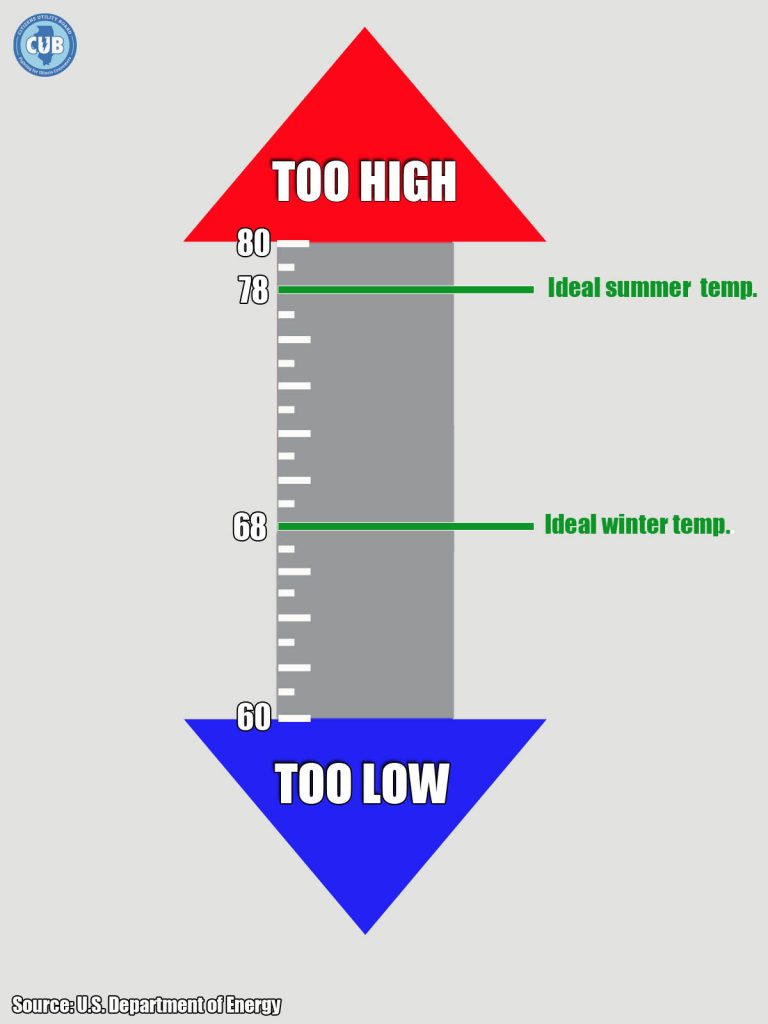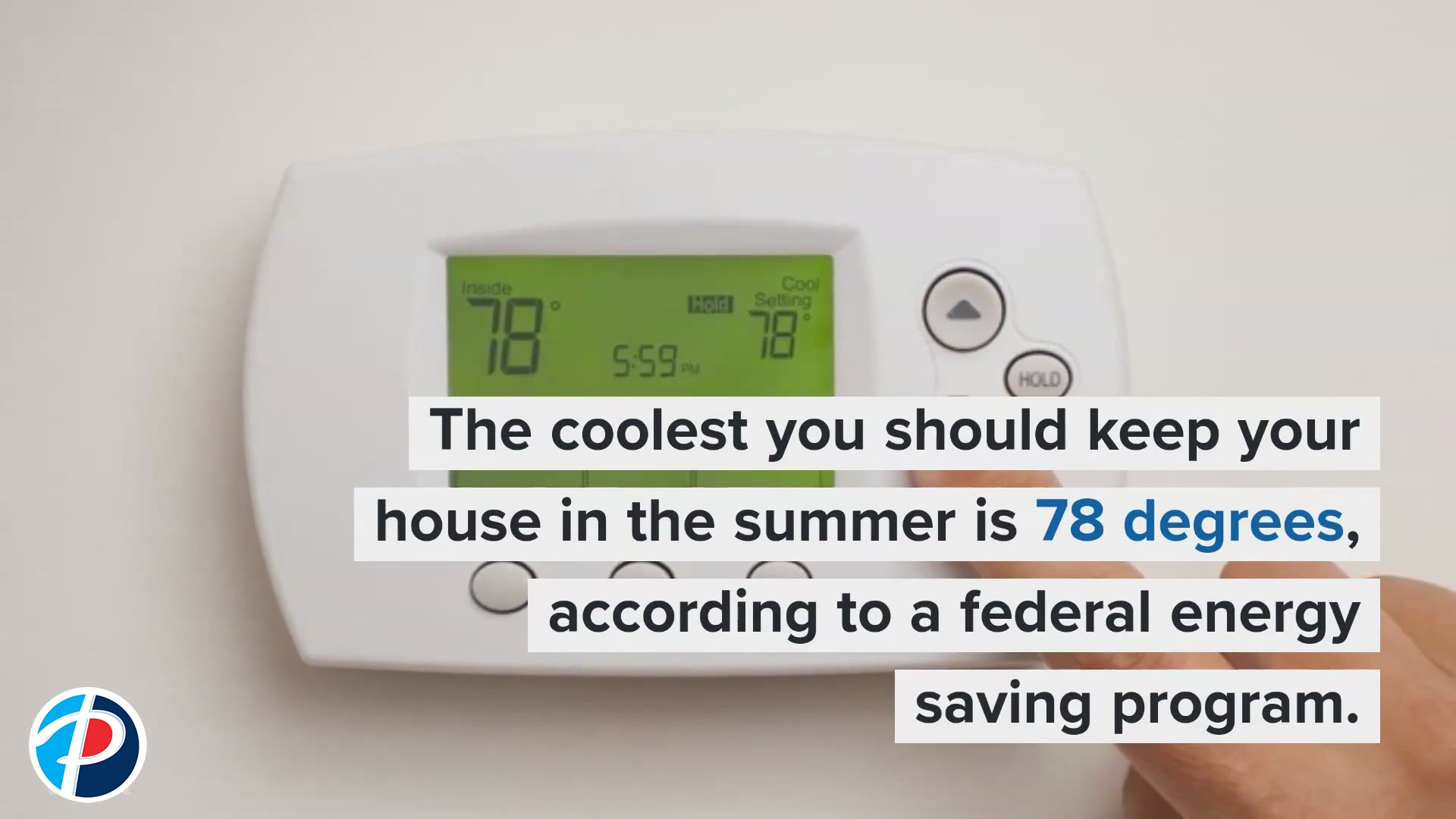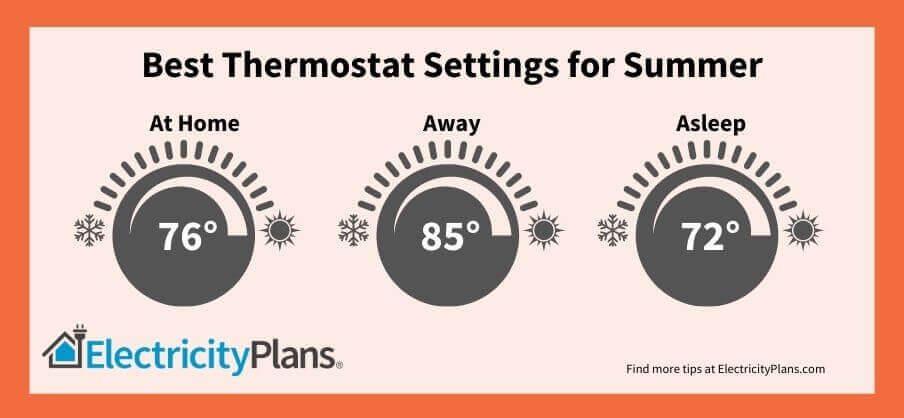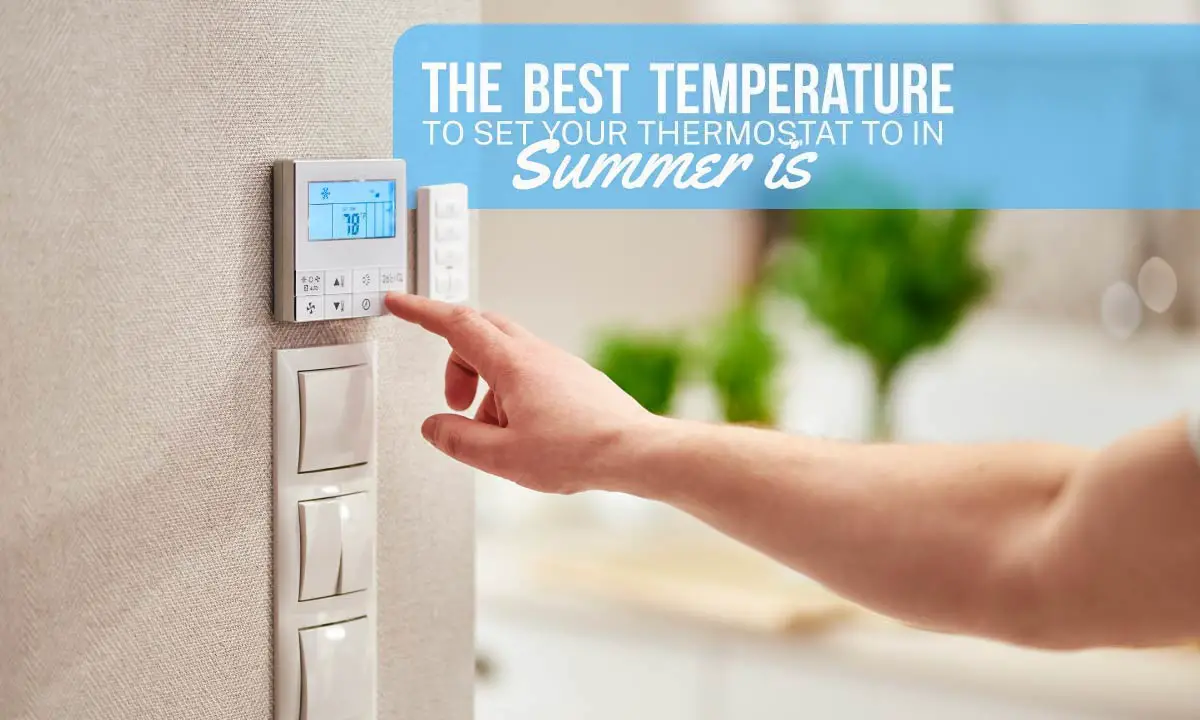Check Best Thermostat Pricing in Amazon
** As an Amazon Associate, I earn from qualifying purchases.
Set your thermostat to 78°F in summer for optimal energy savings and comfort. Adjust slightly for personal preference.
Maintaining the right thermostat setting during summer is crucial for comfort and energy efficiency. A setting of 78°F strikes a balance between cooling and cost-saving. This temperature helps reduce electricity bills without compromising comfort. If you feel too warm, use fans to circulate air and create a cooling effect.
Closing blinds and curtains during peak sunlight hours can also keep indoor temperatures down. Smart thermostats can further optimize settings based on your daily routine. By following these tips, you can enjoy a comfortable home environment while saving on energy costs.
- The Ideal Summer Thermostat Setting
- Energy Efficiency Myths Debunked
- Programmable Thermostats: A Game Changer
- Summer Heatwaves: Thermostat Tactics
- The Humidity Factor
- Sleeping Cool: Ideal Nighttime Temperatures
- Complementary Cooling Strategies
- Maintenance For Maximum Efficiency
- Frequently Asked Questions
- Conclusion
The Ideal Summer Thermostat Setting
Finding the perfect thermostat setting in summer can be challenging. You want to stay cool but also save on energy costs. Setting your thermostat correctly can keep your home comfortable and your wallet happy.
Comfort Vs. Cost: Striking A Balance
Balancing comfort and cost is key to setting your thermostat in summer. A good rule of thumb is to set your thermostat to 78°F (25.5°C) when you’re at home. This temperature keeps you cool without overworking your air conditioner.
If you’re away from home, you can save energy by setting the thermostat to 85°F (29.4°C). This prevents your AC from running unnecessarily. Using a programmable thermostat can help automate these settings, making it easier to maintain the balance between comfort and cost.
Factors Influencing The Perfect Temperature
Several factors can influence the ideal temperature for your home. These include the size of your home, insulation quality, and the number of occupants.
Homes with better insulation can maintain cooler temperatures more efficiently. Larger homes may require different settings to ensure even cooling. The number of people in a home also affects the temperature, as more people generate more body heat.
Other factors include humidity levels and personal preferences. High humidity can make it feel warmer, so you might need to set the thermostat lower. Personal comfort levels vary, so adjust the temperature to what feels best for you.
| Situation | Recommended Thermostat Setting |
|---|---|
| At Home | 78°F (25.5°C) |
| Away from Home | 85°F (29.4°C) |
- Size of Home: Larger homes may need different settings for even cooling.
- Insulation Quality: Better insulation maintains cooler temperatures efficiently.
- Number of Occupants: More people generate more body heat.
- Humidity Levels: High humidity may require a lower thermostat setting.
- Personal Preferences: Adjust the temperature to what feels best for you.
Energy Efficiency Myths Debunked
Many people think they know the best ways to save energy during summer. But some common beliefs are actually myths. Let’s debunk these myths and find out what really works.
Common Misconceptions About Cooling
Myth 1: Setting the thermostat to a very low temperature cools the house faster. This is not true. The air conditioner cools at a constant rate. Setting it too low only wastes energy.
Myth 2: Turning off the AC when you leave saves energy. In reality, it is better to set the thermostat higher. This way, the AC does not work as hard when you return.
Myth 3: Ceiling fans cool rooms. Fans only make people feel cooler. They do not lower the room temperature.
Real Tips For Reducing Energy Bills
Here are some proven tips to save energy and reduce your bills:
- Set the thermostat to 78°F (25.5°C) when you are home. This is the most energy-efficient temperature.
- Use a programmable thermostat to adjust the temperature when you are not home.
- Keep blinds and curtains closed during the day to block out the sun.
- Use ceiling fans to make the room feel cooler. This allows you to set the thermostat a bit higher.
- Seal leaks around windows and doors to keep the cool air inside.
Follow these tips to stay cool and save money this summer.
Programmable Thermostats: A Game Changer
Programmable thermostats are changing how we cool our homes in summer. They help us save energy and money. These devices allow us to set temperatures for different times of the day. This means your home stays comfortable without wasting energy.
Setting Up For Optimal Use
To get the most out of your programmable thermostat, you need to set it up correctly. Here are some steps to follow:
- Install the thermostat in a central location.
- Program different temperatures for day and night.
- Set a higher temperature when you are away from home.
- Choose a cooler temperature for when you are at home.
Using these settings can help you save on your energy bill. For example, set the thermostat to 78°F when you are at home. Set it to 85°F when you are away. This simple change can make a big difference.
Benefits Of Smart Temperature Control
Smart temperature control offers many benefits. Here are some of the key advantages:
- Energy Savings: Reduce energy use by up to 10% a year by setting temperatures wisely.
- Comfort: Enjoy a cool home when you need it the most.
- Convenience: Control your thermostat from your phone.
- Customization: Set different temperatures for different rooms.
Smart thermostats also learn your habits. They can adjust the temperature based on your routine. This means more savings and comfort without extra effort.
In summary, programmable thermostats are a game-changer. They help you save money and energy. Plus, they keep your home comfortable all summer long.

Credit: www.citizensutilityboard.org
Summer Heatwaves: Thermostat Tactics
Summer heatwaves can be unbearable. Finding the right thermostat setting is crucial. It helps keep your home cool and energy bills low. Here are some thermostat tactics for extreme heat.
Adjusting Settings For Extreme Heat
During extreme heat, set your thermostat between 75°F and 78°F. This range balances comfort and energy efficiency. For each degree above 72°F, you save up to 3% on cooling costs.
Use a programmable thermostat. It adjusts the temperature automatically. Set higher temperatures when you’re away. Lower it before you return home. This ensures energy is not wasted.
Fan mode can also help. It circulates air and makes you feel cooler. Use fans along with your air conditioner. This allows you to set the thermostat a bit higher.
Keeping Your Cool During Peak Temperatures
Peak temperatures usually occur in the afternoon. During these hours, keep curtains and blinds closed. This blocks out sunlight and reduces indoor heat.
Use ceiling fans to create a wind-chill effect. This makes the room feel cooler without lowering the thermostat. Drink plenty of water. Staying hydrated helps your body regulate its temperature.
Consider using energy-efficient appliances. They generate less heat and use less electricity. Replace incandescent bulbs with LED lights. They emit less heat and last longer.
| Time of Day | Thermostat Setting | Additional Tips |
|---|---|---|
| Morning | 75°F | Open windows for fresh air |
| Afternoon | 78°F | Close blinds, use fans |
| Evening | 76°F | Turn on ceiling fans |
| Night | 72°F | Ensure good ventilation |
Follow these tactics to stay cool and save money during summer heatwaves. Adjust your thermostat wisely and use fans and energy-efficient appliances. These small changes make a big difference.
The Humidity Factor
During the summer, setting the right thermostat temperature can be tricky. One key factor to consider is humidity. Humidity affects how comfortable you feel indoors. Let’s dive into how humidity impacts your comfort and how to manage it for better cooling.
How Humidity Affects Indoor Comfort
Humidity levels can make your home feel hotter than it is. High humidity means there is more moisture in the air. This makes it hard for sweat to evaporate from your skin. As a result, you feel sticky and uncomfortable.
Check Best Thermostat Pricing in Amazon
** As an Amazon Associate, I earn from qualifying purchases.
On the other hand, low humidity can make the air feel cooler. But very low humidity can dry out your skin and respiratory system. So, finding the right balance is key. Aim for a humidity level between 40% and 60% for optimal comfort.
Dehumidifying For Better Cooling Efficiency
Reducing humidity can improve your cooling efficiency. A dehumidifier can help remove excess moisture from the air. This not only makes the air feel cooler but also allows your air conditioner to work more efficiently.
Here are some tips to dehumidify your home:
- Use a dehumidifier in humid areas like basements.
- Ensure proper ventilation in bathrooms and kitchens.
- Fix any leaks to prevent moisture buildup.
- Use exhaust fans when cooking or showering.
| Humidity Level | Comfort Level |
|---|---|
| 30% – 40% | Too Dry |
| 40% – 60% | Comfortable |
| 60% – 70% | Humid |
| 70% and above | Very Humid |
By managing humidity, you can set your thermostat at a more energy-efficient temperature. This keeps your home comfortable and saves on energy bills.

Credit: gopaschal.com
Sleeping Cool: Ideal Nighttime Temperatures
Finding the perfect temperature for sleep is crucial, especially during summer. The right thermostat setting can help you sleep better and feel refreshed in the morning. This section explores the ideal nighttime temperatures for a cool and comfortable sleep.
Finding The Right Temperature For Rest
The best sleep happens in a cool room. Experts suggest setting the thermostat between 60°F to 67°F for optimal rest. This range helps your body relax and fall asleep faster.
Keeping the room cool can also reduce the need for heavy blankets. This allows you to move freely while sleeping. If you share a bed, a cooler room is often more comfortable for both people.
Below is a table with suggested temperature ranges for different age groups:
| Age Group | Ideal Temperature (°F) |
|---|---|
| Adults | 60-67 |
| Children | 65-70 |
| Infants | 65-70 |
The Impact Of Cool Sleep On Health
Sleeping in a cool room has many health benefits. It can improve the quality of your sleep and make you feel more rested.
- Better Sleep Quality: A cool room helps you fall asleep faster and stay asleep longer.
- Reduced Risk of Illness: Cool temperatures can lower the chances of catching a cold or other illnesses.
- Improved Mood: Quality sleep can boost your mood and energy levels the next day.
Maintaining a cool sleeping environment is essential for overall well-being. Set your thermostat to the recommended range for a restful night.
Complementary Cooling Strategies
Complementary cooling strategies can make a big difference in your home’s comfort during summer. These techniques work alongside your thermostat to keep your home cool and energy-efficient.
Enhancing Airflow With Fans
Using fans can greatly improve airflow in your home. They help distribute cool air more effectively. Ceiling fans are especially useful. They create a wind-chill effect, making you feel cooler.
- Ceiling Fans: Set them to rotate counterclockwise. This pushes cool air down.
- Box Fans: Place them in windows to pull in cool air at night.
- Oscillating Fans: Use them to circulate air in larger rooms.
Fans use less energy than air conditioning. This can save you money on your energy bills.
Shading And Insulation Techniques
Shading your home from the sun can reduce indoor temperatures. Insulation keeps cool air inside and hot air outside.
- Use Blinds and Curtains: Close them during the day to block sunlight.
- Install Awnings: These provide shade for windows and doors.
- Plant Trees: Trees can offer natural shade. They also add beauty to your yard.
Proper insulation in walls and attics is also crucial. It helps maintain a steady indoor temperature.
Here is a quick overview in a table:
| Strategy | Benefits |
|---|---|
| Ceiling Fans | Improve airflow, save energy |
| Blinds and Curtains | Block sunlight, reduce indoor temperature |
| Insulation | Maintain steady temperature, energy-efficient |
These complementary strategies can help keep your home cool. They also reduce the workload on your thermostat and air conditioning system.

Credit: electricityplans.com
Maintenance For Maximum Efficiency
Keeping your thermostat at an optimal temperature during summer is crucial. It ensures comfort and saves energy. To achieve this, regular maintenance of your HVAC system is essential. Proper maintenance can prevent sudden breakdowns and extend the lifespan of your unit.
Regular Hvac Check-ups
Schedule regular HVAC check-ups to keep your system running smoothly. Experts recommend checking your HVAC system twice a year. During these check-ups, a professional will:
- Inspect and clean the coils
- Check the refrigerant levels
- Lubricate moving parts
- Check the thermostat settings
- Inspect the ductwork for leaks
These steps ensure your system works efficiently throughout the summer.
Diy Maintenance Tips
Perform simple maintenance tasks at home to keep your HVAC system efficient. Here are some DIY tips:
- Change the air filter every 1-3 months. A clean filter improves air flow and efficiency.
- Clean the outdoor unit. Remove leaves, dirt, and debris around the unit.
- Check the thermostat batteries. Replace them if needed to ensure accurate readings.
- Inspect the vents. Ensure they are clean and not blocked by furniture or curtains.
- Seal any gaps in doors and windows. This prevents cool air from escaping.
Following these tips can help your HVAC system run more efficiently, saving energy and money.
Frequently Asked Questions
Is 72 A Good Temperature For Air Conditioning?
Yes, 72 degrees is a comfortable air conditioning temperature for most people. It balances energy efficiency and comfort.
Is 78 Too Hot For A House?
78 degrees is generally comfortable for many people indoors. It saves energy and keeps cooling costs low.
Is 75 Too Hot For Thermostat In Summer?
Setting your thermostat to 75°F in summer is comfortable and energy-efficient. It balances cooling and energy savings effectively.
What Is The Best Thermostat Setting For Summer?
Set your thermostat to 78°F (25°C) for summer. This balance keeps your home cool while saving energy.
Conclusion
Finding the ideal summer thermostat setting can improve comfort and energy efficiency. Aim for 78°F when home and higher when away. This balance helps reduce energy bills and environmental impact. Remember to adjust settings based on your personal comfort and local climate.
Stay cool and save energy this summer!
Check Best Thermostat Pricing in Amazon
** As an Amazon Associate, I earn from qualifying purchases.


